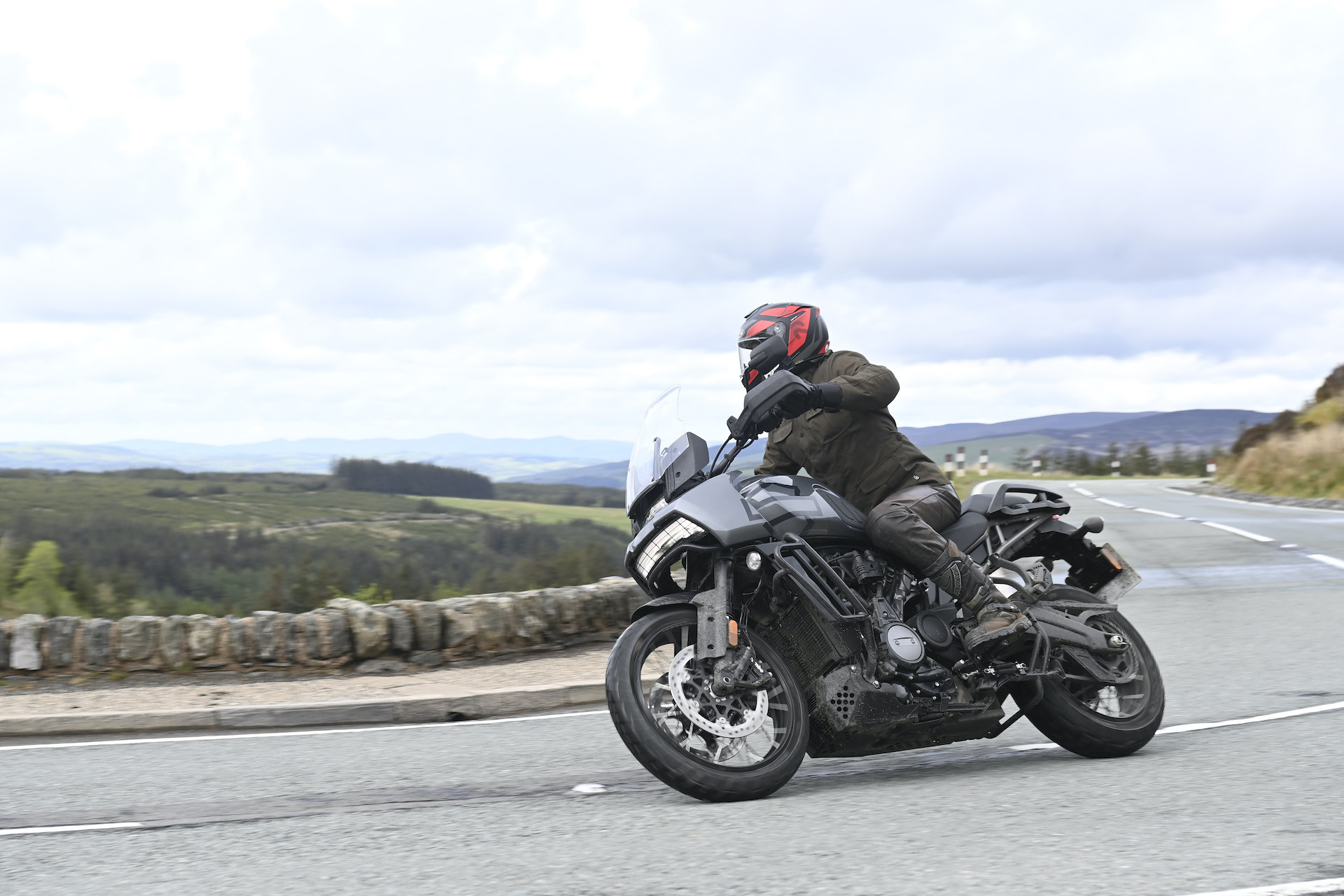Indian Motorcycle’s recent update to their Scout platform has been hailed as a significant move, even drawing comparisons to BMW’s pivotal GS series in terms of brand importance. Bike magazine highlighted this in their June 2024 issue, noting the Scout platform’s impressive 40 percent contribution to Indian’s total sales. This underscores the Scout’s critical role for Indian, much like the GS for BMW.
It’s interesting to consider how the Scout’s popularity might be influenced by Harley-Davidson’s shift away from air-cooled Evo Sportsters. Having personally ridden the newer Sportsters, while acknowledging minor performance and tech advancements, the aesthetic appeal of an Indian Scout Bobber remains superior. However, the new Sportster hasn’t translated to sales success. The Sportster platform saw a concerning 46.2 percent sales drop in 2023, now representing a mere 10.1 percent of Harley’s overall sales. The Pan America platform fares even worse for Harley, contributing only 2.8 percent of their motorcycle sales in the same year.
 Front view of a dark grey Indian Pan America 1250 Special parked on a paved surface, with a blurred background showing trees and foliage.
Front view of a dark grey Indian Pan America 1250 Special parked on a paved surface, with a blurred background showing trees and foliage.
As a fan of the Pan America, its underwhelming sales are surprising. This leads to a pertinent question: instead of just seeing the Scout as “Indian’s GS,” why isn’t Indian directly competing with BMW GS and others by offering a dedicated adventure motorcycle? Has Indian Motorcycle consciously decided against entering the Adventure Bikes segment?
Looking back, the idea of an Indian adventure bike isn’t entirely new. Following the launch of the Indian FTR 1200 in 2018, a leaked internal Polaris document from Asphalt & Rubber (now defunct) revealed plans to expand the FTR platform. Alongside a liquid-cooled big twin engine, Indian aimed to diversify the FTR range into different motorcycle categories. First, a street-focused model was anticipated, which materialized as the FTR and FTR Sport in 2021, featuring 17-inch wheels compared to the original FTR 1200’s (and FTR Rally’s) 19-inch front and 18-inch rear wheels.
(Personal note: Revisiting the FTR and FTR Sport, their design is strikingly attractive, particularly the FTR Sport. They project a ‘MT-09 but more refined’ feel, which is appealing, although their pricing aligns more with the MT-10.)
The leaked document indicated that an FTR-based adventure motorcycle was the next logical step after the street models. The timeline suggested a 2020 unveiling for the street version and a 2021 debut for the adventure bike.
 Side view of a red and black Indian FTR Sport parked on a paved surface with a building in the background.
Side view of a red and black Indian FTR Sport parked on a paved surface with a building in the background.
While the street-focused FTR models arrived, albeit slightly delayed in 2021, 2024 is here, and an Indian adventure bike is still missing. Why hasn’t it happened? Considering the motorcycle market landscape, it’s unusual for a manufacturer of Indian’s size and scope to lack a dedicated adventure offering. Most major motorcycle brands provide a range of adventure options, from full-fledged adventure bikes like the KTM 890 Adventure R to adventure tourers such as the Triumph Tiger 1200 GT, and even adventure-styled sport tourers like the BMW S 1000 XR. Many brands offer all these variations. In fact, Indian seems to be the only significant manufacturer producing motorcycles 500cc and above without an adventure bike in their portfolio.
While following market trends isn’t always mandatory, Indian’s situation is unique. Their parent company, Polaris, is a leader in off-road vehicles, including side-by-sides and ATVs. Polaris’s off-road expertise makes an Indian adventure bike a seemingly natural brand extension. While Harley-Davidson or Royal Enfield entering the adventure bike market might have seemed less intuitive at one point, for Indian, it aligns perfectly with their heritage and Polaris’s capabilities.
Despite a saturated adventure motorcycle market, Indian could undoubtedly capture a substantial share. It appeared they recognized this potential several years ago. Perhaps they still do.
 Side view of a beige and red Indian FTR Rally parked on a dirt road with trees and foliage in the background.
Side view of a beige and red Indian FTR Rally parked on a dirt road with trees and foliage in the background.
Polaris’s financial approach, prioritizing the bottom line, likely plays a role. This cautiousness also affected Victory Motorcycles, hindering bolder moves despite the ambitions of their engineers, designers, and marketing teams. The pandemic years, 2020 and 2021, and subsequent supply chain issues further impacted Polaris. As reported by the Star Tribune, these challenges led to expensive production and inventory adjustments. Following lower-than-expected fourth-quarter profits in 2023, Polaris announced a renewed focus on cost reduction and lean manufacturing to improve profit margins.
This translates to a likely slowdown in significant new model ventures. Expect updates to successful existing lines like the Scout and Chief, and potentially more collaborations, but entirely new model categories might be on hold.
However, there’s a positive note. Polaris acknowledged Indian’s first year of profitability in 2023, nine years after its revival. This financial milestone is significant. If the updated Scout platform performs well, it might revitalize plans for an FTR adventure bike in 2025 or beyond. There’s still hope.
On the other hand, any prospects for an electric motorcycle from Indian appear to be indefinitely postponed.
Share this:
Like this:
Like Loading…
